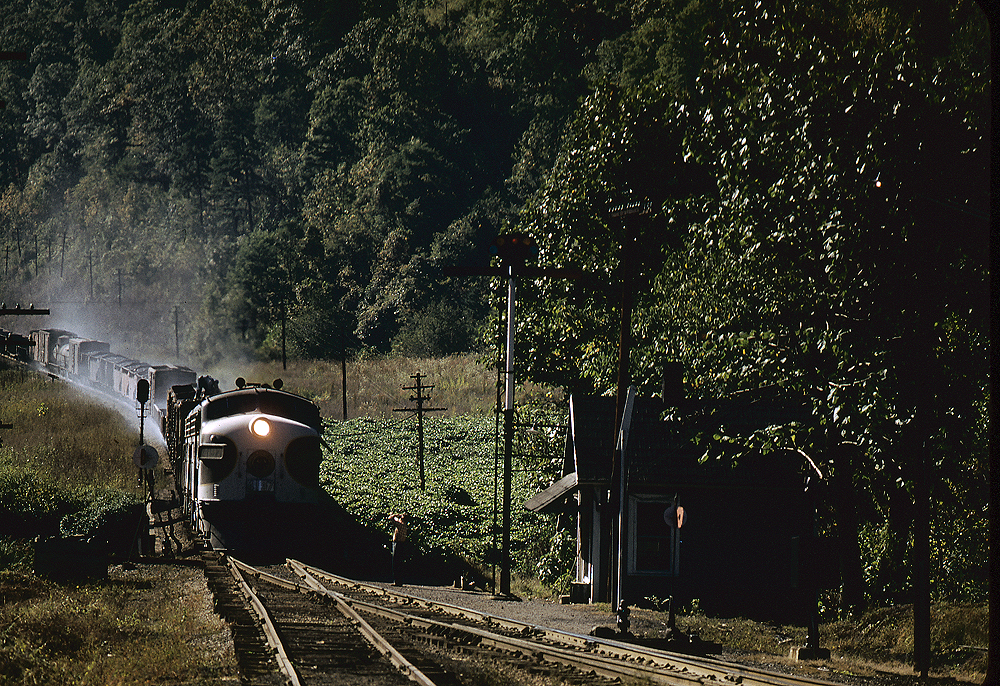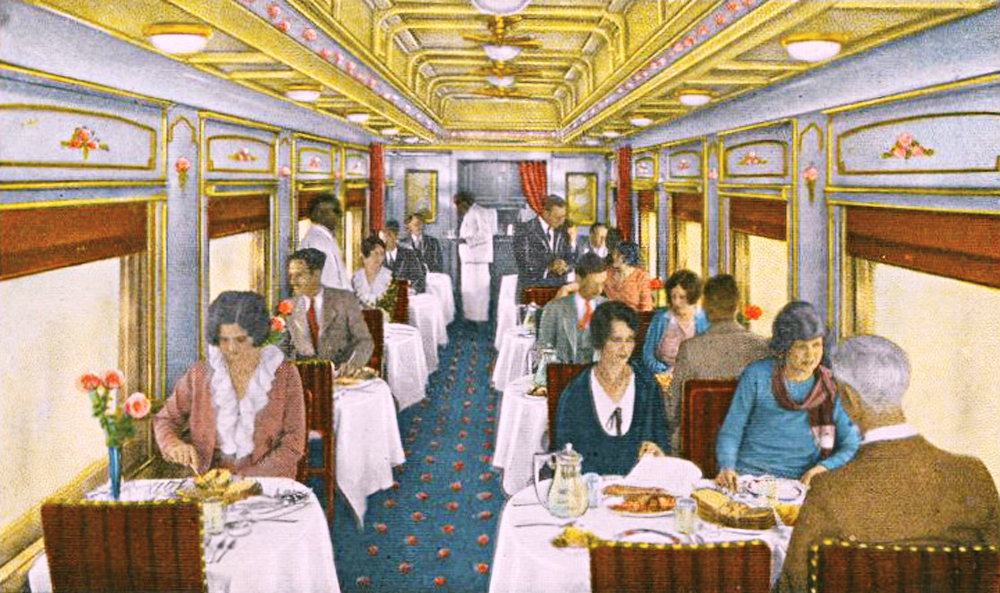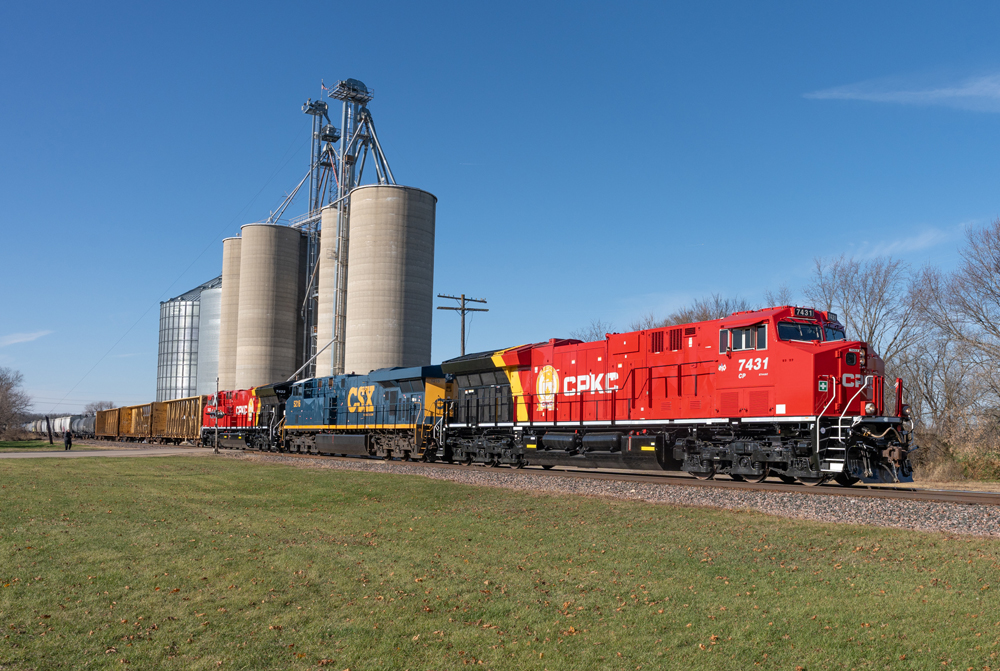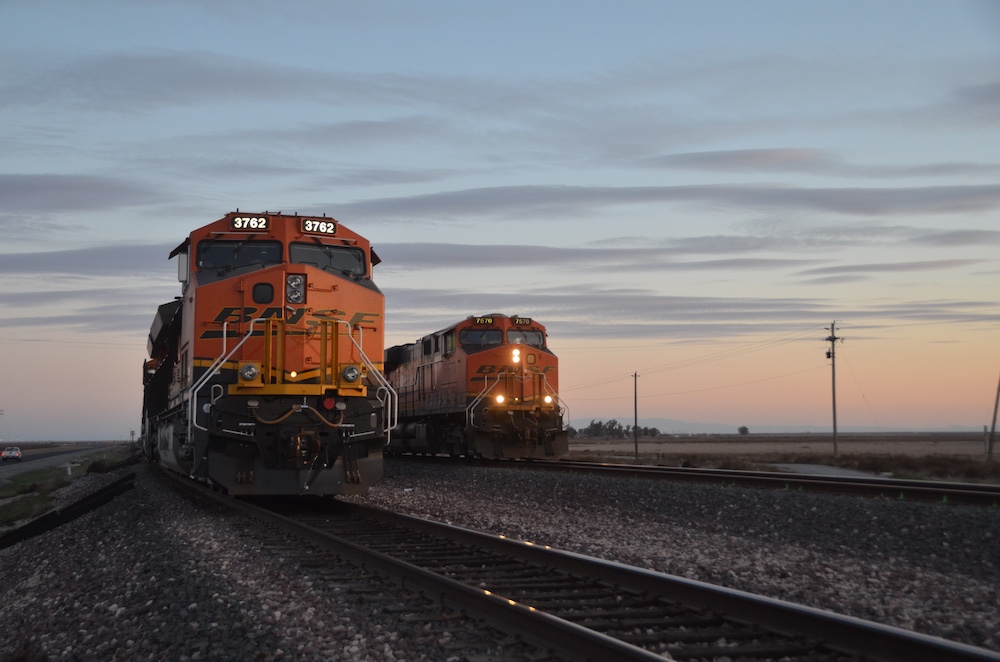Though rails of steel are standard today, iron and even wood found widespread use in the 19th century. Many early railroads were built of wooden rails capped with thin iron bars or “straps” to provide a smooth running surface for the wheels.
All-iron rails were imported from Britain as early as 1831, with the first ones being produced, or “rolled,” in the U.S. in 1844. By 1850, iron rails were essentially standard throughout America.
But iron, with its relatively high carbon content, made for brittle rails. Post-Civil War advances such as the Bessemer process reduced the cost of steel to the point that it was economical to use in rails. In 1880, about 30% of all track was laid with steel rails; by the turn of the century, steel had almost completely replaced iron.
Steel rail composition
Steel rail is composed of iron, carbon, manganese, and silicon, and contains impurities such as phosphorous, sulphur, gases, and slag. The proportions of these substances may be altered to achieve different properties, such as increased resistance to wear on curves.
The standard configuration for North American rail resembles an upside down T. The three parts of T-rail are called the base, web, and head. The flat base enabled such rail to be spiked directly to wooden crossties; later, rail was placed on the now-standard steel tie plate. While the proportions and precise shape of rail are subject to constant analysis and refinement, the basic T-section has been standard since the mid-19th century.
Weight
The most common way of describing rail is in terms of its weight per linear yard (the historic British unit of length), which is a function of its cross section. In the late 19th century, rail was produced in a range of sections weighing between 40 and 80 lbs. per yard. Weights increased over time, so that rail rolled today weighs between 112 and 145 lbs. (The Pennsylvania Railroad’s 155-lb. section, used for a time after World War II, was the heaviest used in the U.S.)
Generally, the greater the tonnage or the higher the speeds on a given line, the heavier the rail used will be. Because of the cost of track maintenance, the longer life of heavier rail makes it preferred even for urban transit systems, where loads are light and speeds low. Heavier rail sections are often used at road crossings, switches, and crossings at grade with other rail lines.
Jointed rail segments
The length of standard rails has historically been related to the length of the cars used to transport them. From an early range of 15-20 feet, rail length increased with car size until a standard of 39 feet (easily accommodated by the once-common 40-foot car) was reached. Even with the advent of today’s longer cars, 39 feet has remained the standard for rail owing to limitations in steel mills and ease of handling.
The joints in rail – its weakest points – can make for a rough ride, and are expensive to maintain. Individual rails are joined with steel pieces called joint (or angle) bars, which are held in place by four or six bolts. Today, the six-bolt type, once reserved for heavy-duty applications, is standard. The bolts in a joint bar are faced alternately outward and inward to guard against the remote possibility that a derailed car’s wheel would shear them all off, causing the rails to part. Transition between rails of two different weights is achieved with special angle bars. In territory where the rails serve as conductors for signal systems, bond wires must be used at the joints to maintain the circuit.
Welded rail
The troublesome nature of rail joints prompted the most easily recognized advance in rail technology: the adoption of continuous welded rail (CWR).
From its early use on a handful of roads in the 1940’s, welded rail has come to be preferred for almost all applications. It is produced by welding standard 39-foot (or newer 78-foot) segments together into quarter-mile lengths at dedicated plants.
The rails are transported to where they’re needed in special trains, which are pulled slowly out from under the rail when it is to be unloaded. When in place, CWR is often field-welded into even greater lengths. Much jointed track survives because of the long lifespan of even moderately used rail, and because the specialized equipment needed for CWR installation is not economical for short distances.
Managing the expansion and contraction that comes with temperature change is important with CWR. To avoid expanding and potential buckling when in service, welded rail is laid when temperatures are high (or is artificially heated). Rail anchors clipped on at the ties keep the rail from getting shorter as it contracts with falling temperatures. Thus constrained, it shrinks in cross section (height and width), but not in length. Because it’s in tension, welded rail is treated with care during trackwork in cold weather.
Maintaining and reusing rail
Under heavy traffic, rails get worn down, although their life can be extended by grinding the head back to the proper contour.
Rail no longer suited for main-line use may still have some light-duty life in it and is often relaid on branches, spurs, or in yards. Main-track reduction projects are also sources of such “relay” rail.
When rail wear is uneven at a given location (such as a curve), rail may be transposed from one side to another to get maximum use out of it.













